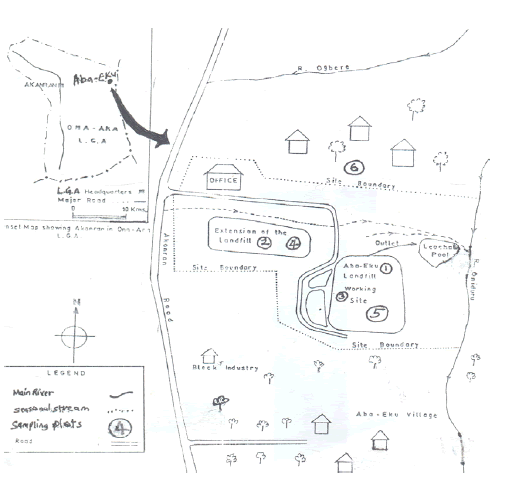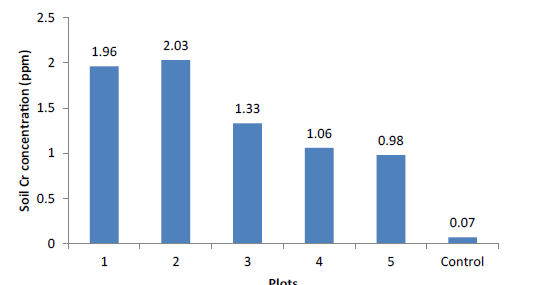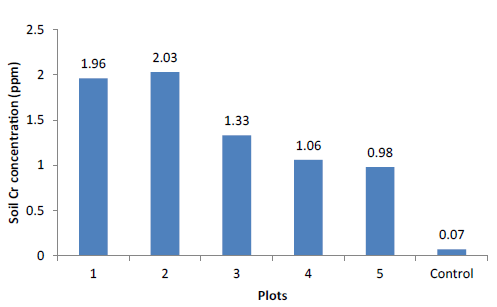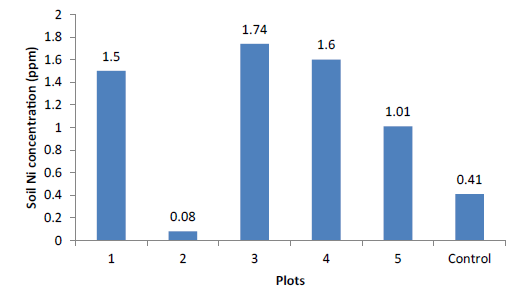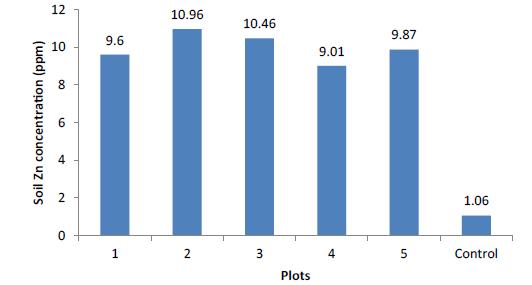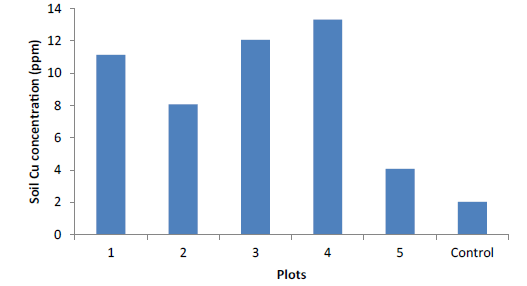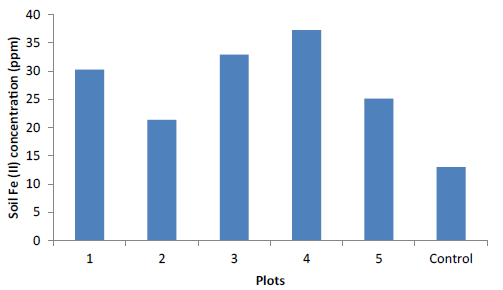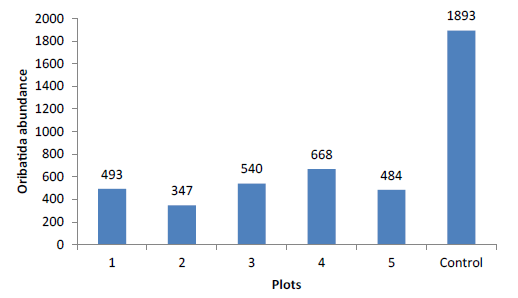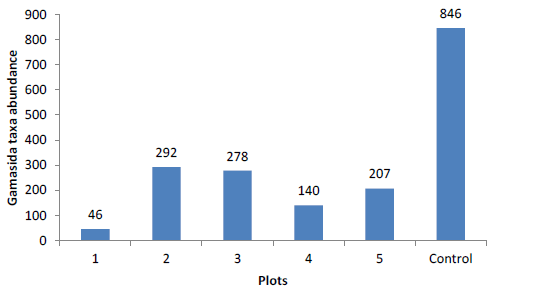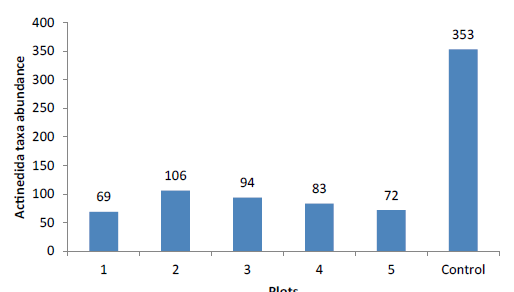Short Communication - International Journal of Pure and Applied Zoology (2016) Volume 4, Issue 2
Evaluation Of Effects Of Heavy Metals On Abundance And Diversity Of Soil Mites In A Tropical Landfill
| Emmanuel Teryila Tyokumbur* Department of Zoology, University of Ibadan, Ibadan, Nigeria |
| Corresponding Author: Emmanuel Teryila Tyokumbur E-mail: e.tyokumbur@mail.ui.edu.ng |
| Received 02nd February 2016; Accepted 16th February 2016; Published 24th February 2016 |
Abstract
A study was carried out the Evaluation of Effects of Heavy Metals on Abundance and Diversity of Soil Mites in a tropical landfill in Ibadan from April to July 2003. Heavy metal sources from natural and the anthropogenic factors have increased their bioavailability and ecological impacts in the ecosystem. The objective of the study was to assess the impact of heavy metals on soil mites in a tropical landfill site in Ibadan. Five demarcated study plots at the landfill were randomly selected and marked out with a dimension of 10 metres by 10 metres with a Control site of the same dimension located at an elevated location about 100 metres away from the edge of the landfill. Soil samples at a depth of <10 cm were collected from the study plots using a hand trowel on a monthly basis. Buckard –Model of Berlesce-Tullgren funnel extractor was used to extract soil mites while the soil samples were acid-digested for heavy metal analyses using Shimadzu Atomic Absorption Spectrophotometer. With the exception Pb (1.99 ppm) at Plot 3, all the other mean heavy metals were below that of the Control Plot (6). Soil mite taxa had higher abundance and diversity at the Control plots than in the landfill. Heavy metals Cr, Ni, Zn, Cu, Mn and Fe concentrations in the study exceeded guideline limits set by the Federal Ministry of Environment (FEPA, 1992). The study concludes that the soil in Aba- Eku landfill in Ibadan is contaminated by heavy metals.
Keywords |
||||||||||||||||||||||
| Heavy metals; Soil mites; Landfill; Abundance; Diversity; Tropics | ||||||||||||||||||||||
INTRODUCTION |
||||||||||||||||||||||
| Soil mites are an essential component of the diverse soil fauna community that comprises of microfauna such as protozoa from the phylum sarcomastigophora and ciliophora; mesofauna such as nematodes (Phylum nematoda) measuring <0.1 mm; microarthropods like mites (Order acari); springtails (Order collembola), rotifers (Phylum rotifera ) measuring -0.1 mm-5 mm; macrofauna (>5 mm); macroarthropods such as beetle and fly larvae (Order coleoptera and diptera); cicada nymphs (Order homoptera); centipedes (Class chilopoda); millipedes (Class diplopoda) and earthworms (Class oligochaeta) (Huguier et al., 2014). Historically, heavy metal impact consciousness arose and intensified as a result of the outbreak of Minamata disease in Japan in 1954 (Kiyoura, 1962). This was followed by the cadmium poisoning also known as Itai itai disease (Shimizu, 1962), lead poisoning and later heightened following the environmental revolution set off by Rachel Carson in a book titled Silent Spring. Ongoing awareness and enlightenment at local and global levels has improved however heavy metal analyses remains very expensive Heavy metal sources include natural and the anthropogenic factors that have increased its bioavailability in the ecosystem. Most anthropogenic sources are as a result of industrial, domestic and agricultural activities that have elevated heavy metal bioavailability and ecological impacts due to the dynamic interaction between spatial and temporal factors in the environment (Nriagu, 2004). Heavy metals have found their way into living systems as a result of bioaccumulation mediated by uptake kinetics, metabolism, excretion, complexation and storage. The major effects have being changes in anatomical features, weight, histochemistry and developmental rates, abnormal growths that often lead to neoplasm or tumours. These impacts are manifested in reproductive and gamete viability, delayed larval development, declining fecundity and alterations in reproductive cycle and frequency. At the individual level, shortened life expectancy and increased vulnerability to diseases and parasites are the norm. At the ecosystem level, there is alterations in community structure, patterns of succession, nutrient cycling, energy flow and trophic dynamics (Odiete, 1999). Soil invertebrate communities such as mites can be used as an indicator of human impact on ecosystems since the reactions of indicator species to increased concentrations of toxic substances in the laboratory and in the field can be often used to estimate critical levels for soil pollution (Zaitsev and Staleen, 2001, Skubala and Kafel, 2004). The main objective of this study is to assess the impact of heavy metals on soil mites in a tropical landfill site in Ibadan which studies from elsewhere have confirmed (Caruso et al., 2007). | ||||||||||||||||||||||
MATERIALS AND METHODS |
||||||||||||||||||||||
Study Area and Sampling |
||||||||||||||||||||||
| The study area is located in Aba Eku Municipal Solid Waste landfill is located near Ibadan between Longitude 30º50‘, 40º50'E and Latitude 70º5 ', 70º30'N.The five demarcated study plots were randomly selected and marked out with a dimension of 10 m by 10 m. A control site of the same dimension was marked at an elevated location about 100 m away from the edge of the landfill which was relatively undisturbed. The frequency of soil sample collection was monthly from April-July 2003 (n=20) during the wet season. The top soil at a depth of 0-10 cm was collected using a hand trowel. | ||||||||||||||||||||||
Extraction Procedure and Identification |
||||||||||||||||||||||
| The Buckard –Model of Berlesce-Tullgren funnel extractor was used to extract the soil mites from the soil samples as described by Lasebikan (1974). Identification of soil mites was carried out to generic level using keys and illustrations from Evans et al., (1967), Norton (1990) and, Balogh and Balogh, 1992). The abundance was expressed as number/m2 in the demarcated plots (landfill and undisturbed subsets). | ||||||||||||||||||||||
Heavy Metal Analyses |
||||||||||||||||||||||
| Shimadzu Atomic Absorption Spectrophotometer (AAS) was used for the analyses of soil samples from the demarcated plots. Two grams of oven dried and pulverized soil sample was weighed into digestion flasks. 2 mL mixture of 70% concentrated HNO3 and HClO4 (2:1) was added and then digested on a digester until a clear solution was obtained and then filtered .The clear solution was cooled ,transferred completely into 10 mL test tube using distilled water, filtered and finally made up to the mark. The analyses for heavy metals in the samples were carried out in duplicates using the AAS. | ||||||||||||||||||||||
RESULTS |
||||||||||||||||||||||
Soil concentration of heavy metals |
||||||||||||||||||||||
| The results of the mean heavy concentration in the soil of the demarcated plots in the study is shown in (Table 1)The highest mean Cr was 2.03 ppm (Plot 2), while the least was 0.98 ppm (Plot 5) with all values at the other site above the Control plot. Mean Pb was highest at plot 5 (3.01 ppm), while the least value was recorded at plot 3 (1.99 ppm). Ni was highest at plot 3 (1.74 ppm) while the least was at plot 2 (0.08 ppm) which was also lower than that of the Control plot (0.41 ppm). The highest mean Zn value recorded at plot 5 (9.87 ppm) while the least was at plot 3 (1.46 ppm) with all values at the study plots above the control plot (1.06 ppm). Cu was highest at plot 4 (13.31 ppm while the least mean value was 4.08 ppm (Plot 5) with all values above that of the Control plot (2.03 ppm). The mean Mn concentration was highest at plot 2 (9.18 ppm) with the lowest at plot 4 (2.34 ppm), while all the values from all the plots above the control plot (1.97 ppm). Mean Fe was lowest at plot 2 (21.38 ppm) while the highest concentration was recorded at plot 4 (37.24 ppm) with all the values in all the study plots above the Control (12.98 ppm). (Figures 1-8) shows the pattern of variation of the soil heavy metals in the study plots. | ||||||||||||||||||||||
Soil mite abundance and diversity |
||||||||||||||||||||||
| The soil mite’s taxa abundance is shown in (Figures 9-11).The highest abundance of the oribatida taxa was found in the control plot (6). In the experimental plots, the highest abundance was found in plot 5 (668), while the least was in plot 2 (347).The order gamasida in the experimental plots were all lower than the control which had an abundance of 864. In the impacted plots, plot 1 had the lowest value of 46 while the highest was in plot 2 (292).The frequency of occurrence of the actinedida taxa in the impacted plots was all lower than the control plot (353). Plot 1 had the least value (69) while the highest in the landfill was 106 | ||||||||||||||||||||||
Berger-Parker Dominance Index (BPDI) in the study area |
||||||||||||||||||||||
| The Berger-Parker Dominance Index (BPDI) is the percentage contribution of each species to diversity (Caruso et al., 2007). Thus, any family or taxonomic group with comparative abundance to the total number of soil mites in each study plot with values of ≥10% density showed that the species was dominant. The table showing the BPDI of soil mites in the study area is shown in (Table 2). Plot 6 (Control) had the highest number of taxonomic groups when compared with the landfill plots. Among the landfill plots, Plot 1 had the highest number of taxonomic groups (11), while the least was Plot 3 (8). The Control plot had the least number of dominant taxa (2) while the highest were Plots 3 and 5 (3). | ||||||||||||||||||||||
Relationship between soil mite abundance and heavy metal concentration |
||||||||||||||||||||||
| The correlation coefficient (r) values between the means of the heavy metals and soil mites taxa is shown in (Table 3). Fe (II) concentration in the landfill soils was significantly correlated to oribatida abundance. Similarly, Zn was significantly correlated the abundance of order gamasida | ||||||||||||||||||||||
DISCUSSION |
||||||||||||||||||||||
| The high concentration of heavy metals in the landfill can be attributed to the impact of leachates from the wastes disposed of in the study plots. The soil mite densities fluctuated with the trace metal levels in the landfill and control plots. This study corroborates earlier findings within the ecological zone by Sridhar and Bammeke (1986) and in other places (Nahmani and Lavelle, 2002; Skubala and Kafel, 2004; Kapusta and Sobczyk, 2015; Madani et al., 2015). The heavy metal contamination measured in this study serves as an indication of the extent of pollution as a result of the landfill site in Aba-Eku, Ibadan. The study shows that soil mites can be used as biological indicators to ascertain the level of ecological imbalance caused by the solid wastes in a landfill (Gergocs and Hufnagel, 2009; Huguier et al., 2014). The correlation that exists in the study between the heavy metal levels in the soil and abundance of soil mites at the demarcated plots indicates that they both interact biologically in the landfill. For example, there was significant correlation between Fe (II) and oribatid mites (r=0.949 at P>0.05), Zn and gamasid mites (r=0.953, p>0.05) showing the biota is affected in one way or the other. Other studies have shown similar trends on the effects of heavy metals on the soil mite community (Streit, 1984; Heikens et al., 2001; Nahmani and Lavelle; 2002; and Migliorini, et al., 2004). The Berger- Parker Dominance Index (BPDI) showing the percentage contribution of each species, family or taxonomic group to the total number of soil mites in each study plot indicated that values of ≥10 % density showed that the species were dominant. The sampled plots with relatively higher number of dominant groups were an indication of an unstable community in transition with several ecological opportunities for diverse niches. It was also an indication of natural or anthropogenic impacts that had upset the ecological balance thereby favouring opportunistic colonization and flourishing of less viable species with the flouring invasive species (Chapman and Reiss, 1992). Since soil mites are sedentary in nature, they can be used as ecological biota for biomonitoring perturbations in the soil ecosystem. Comparatively, Cr, Ni, Zn, Cu, Mn and Fe concentrations in the study exceeded guideline limits set by the Federal Ministry of Environment (FEPA, 1992). This study therefore shows that the soil in Aba- Eku landfill in Ibadan is contaminated by heavy metals. | ||||||||||||||||||||||
CONCLUSION AND RECOMMENDATION |
||||||||||||||||||||||
| Since heavy metals in landfills have the geological potential of leaching into groundwater and surface water, they could easily find their way into the food chain to affect higher consumers like man, and there is the need for continuous monitoring to check the ecological transfer. | ||||||||||||||||||||||
Tables at a glance |
||||||||||||||||||||||
|
||||||||||||||||||||||
Figures at a glance |
||||||||||||||||||||||
|
||||||||||||||||||||||
References
|
